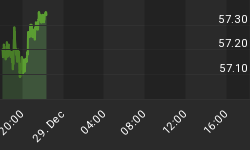12/13/2010 8:58:33 AM
The NASDAQ-100 closed at a thirty-eight month high and the S&P-500 closed at a twenty-six month high as the Dow readies to challenge its high...
Recommendation:
Take no action.
Daily Trend Indications:

- Positions indicated as Green are Long positions and those indicated as Red are short positions.
- The State of the Market is used to determine how you should trade. A trending market can ignore support and resistance levels and maintain its direction longer than most traders think it will.
- The BIAS is used to determine how aggressive or defensive you should be with a position. If the BIAS is Bullish but the market is in a Trading state, you might enter a short trade to take advantage of a reversal off of resistance. The BIAS tells you to exit that trade on "weaker" signals than you might otherwise trade on as the market is predisposed to move in the direction of BIAS.
- At Risk is generally neutral represented by "-". When it is "Bullish" or "Bearish" it warns of a potential change in the BIAS.
- The Moving Averages are noted as they are important signposts used by the Chartists community in determining the relative health of the markets.
Current ETF positions are:
In cash.
Daily Trading Action
The major index ETFs opened higher and then began to immediately sell-off which lasted about forty-five minutes before the major indexes reversed course and began to move higher. That steady march lasted until around 2:00pm when it shifted to a sideways move. A rally in the final forty-five minutes completed the move with all of the major indexes closing higher with fractional gains. The NASDAQ-100 and S&P-500 closed at new highs, the former at a level not seen since October 2007 and the latter since September 2008. The Dow is approaching its November 5th high, a level not seen since September 2008. The Russell-2000 (IWM 77.75 +0.96) closed with a more than one percent gain while the Semiconductor Index (SOX 416.69 +0.29) closed little changed. The Bank Index (KBE 25.31 +0.26) also posted a one percent gain and the Regional Bank Index (KRE 25.29 +0.38) was even stronger. The 20+ Yr Bonds (TLT 93.15 -0.57) posted a fractional loss but closed above its intraday low (92.11) on Devember 8th. NYSE volume was light with 974.5B shares traded. NASDAQ volume was below average with 1.738.5B shares traded.
There were five economic reports of interest released:
- Trade Balance (Oct) dropped to -$38.7B versus an expected -$44.5B
- Export Prices ex-agriculture (Nov) rose 0.8%
- Import Prices ex-Oil (Nov) rose 0.8%
- UniversityofMichigan Consumer Sentiment (Dec) came in at 74.2 versus an expected 72.5
- Treasury Budget (Nov) came in at -$150.4B versus an expected -$134.0B
The first three reports were released an hour before the open. The UofMich Consumer Senitment report came out twenty-five minutes into the session and contributed to a rise in futures markets. The last report was released a half hour into the session. The final report was released at 2:00pm.
The U.S. dollar closed flat again with a tight trading range.
All ten of the economic sectors in the S&P-500 moved higher led by Industrials (+1.0%), Financials (+0.9%) and Healthcare (+0.9%).
Implied volatility for the S&P-500 (VIX 17.61 +0.36) rose two percent while the implied volatility for the NASDAQ-100 (VXN 18.77 -0.29) fell about one and a half percent. The VXN is just 0.10 above its recent closing low (18.67 achieved on Nov 5th) and 0.49 above its intraday low of (18.28 achieved on Nov 9th).
The yield for the 10-year note rose eight basis points to close at 3.30. The price of the near term futures contract for a barrel of crude oil fell sixty-three cents to close at $87.74.
Market internals were positive with advancers leading decliners 9:5 on the NYSE and by 2:1 on the NASDAQ. Up volume led down volume by 7:2 on the NYSE and by 3:1 on the NASDAQ. The index put/call ratio rose +0.10 to close at 1.36. The equity put/call ratio fell -0.01 to close at 0.42. The level of complacency remains extreme.
Commentary:
Friday's trading continued to see lighter volume trading as the NASDAQ-100 made a three-year high and the S&P-500 a two-year high. The Dow isn't far behind and will likely challenge its two-year high on Monday. Since the Russell-2000 has been out in front leading this move higher, all the most widely monitored indexes are at or threatening to break to new highs. The important semiconductor index, however, seems to be faltering. It did, however, close at a level not seen since June 2008 as it has been leading the rally prior to being superceded by the Russell-2000.
There is a tendency to second guess a decision to remain in cash. After all, everything we monitor says the major indexes have a bullish bias, are in uptrend states, and should move higher. With that being said, they are also overbought to an extreme here and while we believe that they can continue higher, we are watching for a spike in implied volatility, which should correspond with a correction for the major indexes.
We hope you have enjoyed this edition of the McMillan portfolio. You may send comments to mark@stockbarometer.com.
















